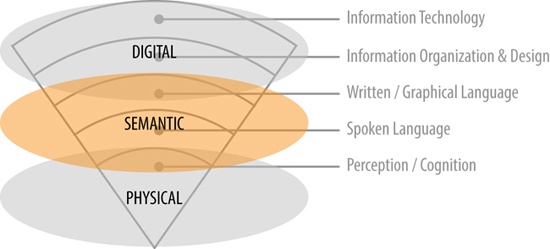Part III. Semantic Information
Language as Environment
SEMANTIC INFORMATION IS WHAT WE ADD TO THE ENVIRONMENT TO MAKE IT EVEN MORE RELEVANT AND USEFUL FOR HUMANS; itâs a mirror we use to reflect upon our experience and create narratives for explaining our environments to ourselves; itâs the primary interface between humans and the complex systems that humans create. As we will see, semantic information is an inseparable and crucial part of how context is shaped in the human environment.[171]

In Part III, we cover basic concepts about what language is and how it works. We will see how symbols give us amazing flexibility in our environment but also how they come with challenges. Weâll also see how language works as a kind of environment, functioning in ways similar to but different from physical information, and how writing enhances and changes those properties. Finally, weâll look at how physical and semantic information intersect and how technology adds even more flexibility to the mix, with more challenges to overcome.
[171] Moving forward, Iâll be using semantic information and language interchangeably; this would not work in a linguistics classroom, but for our purposes here, it will suit fine.
Get Understanding Context now with the O’Reilly learning platform.
O’Reilly members experience books, live events, courses curated by job role, and more from O’Reilly and nearly 200 top publishers.

